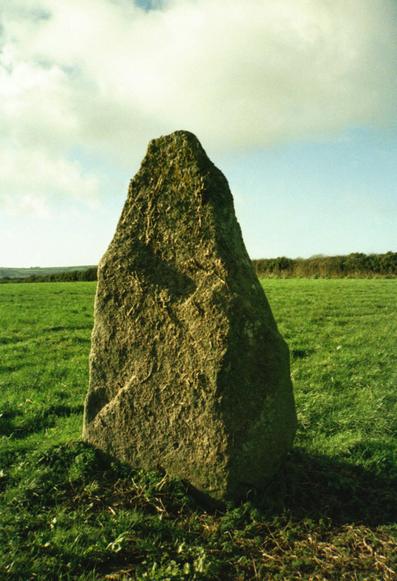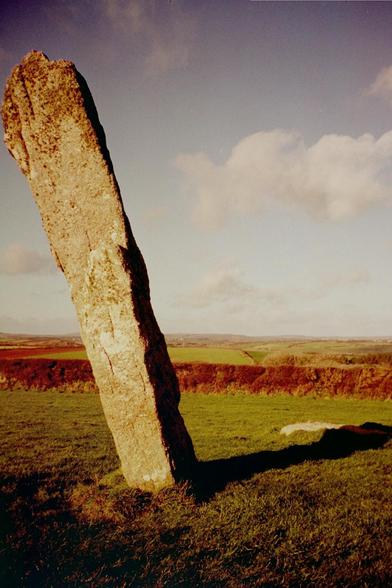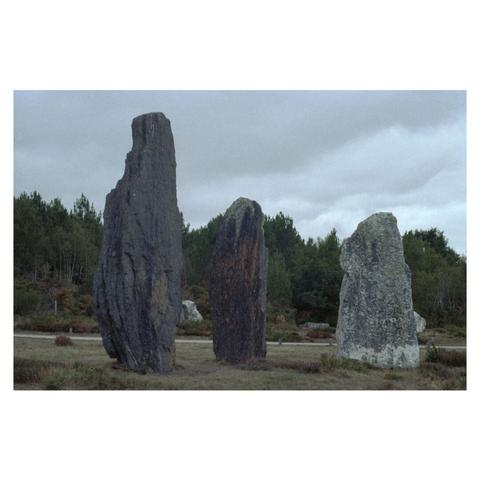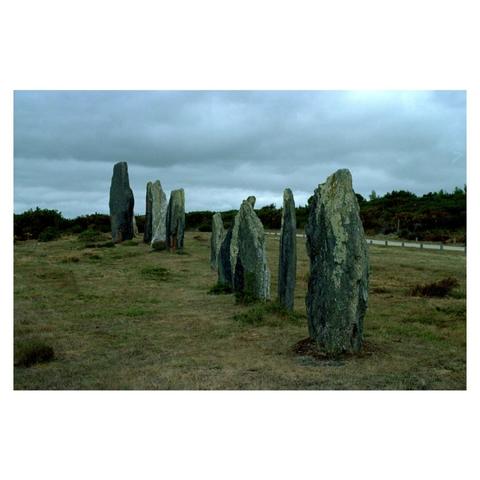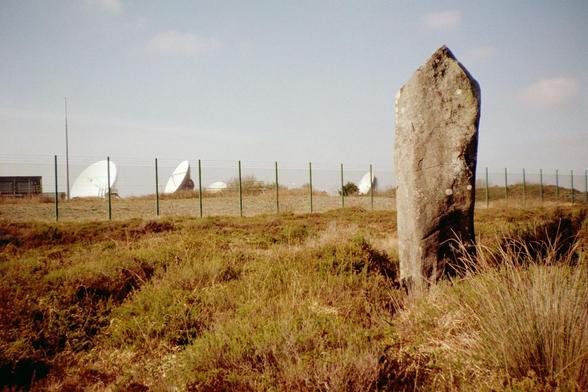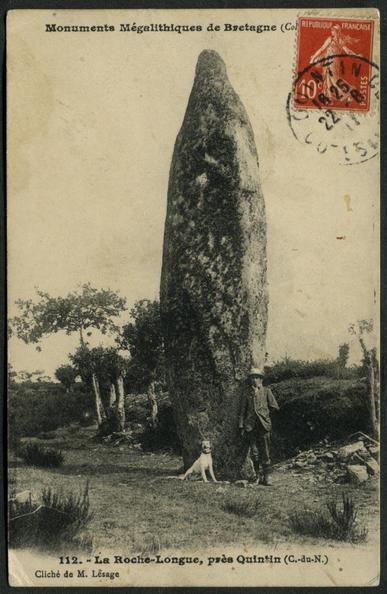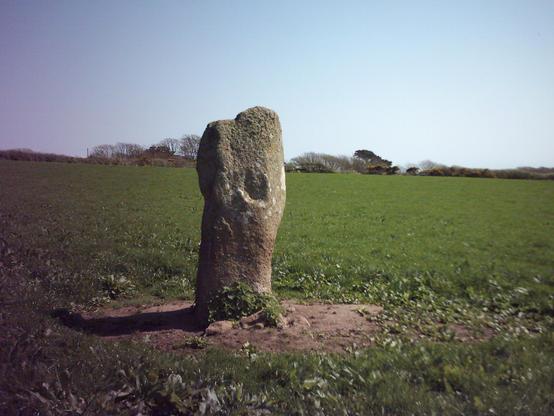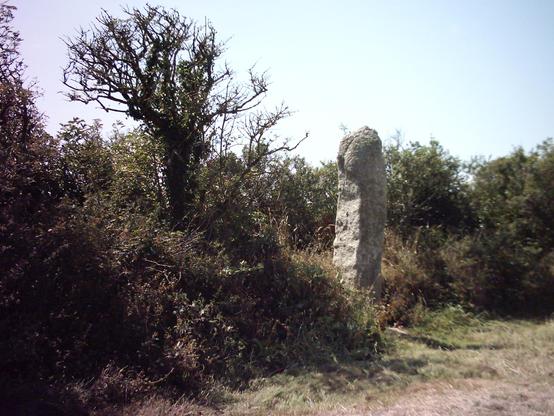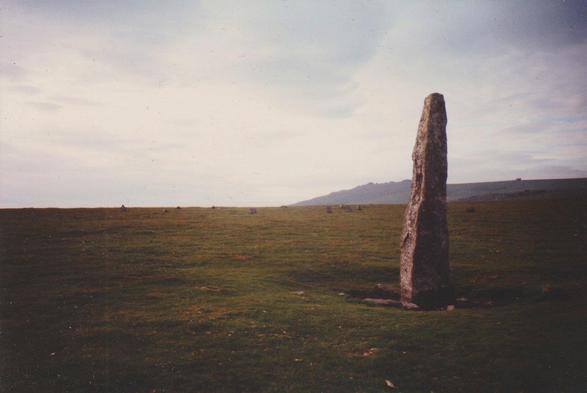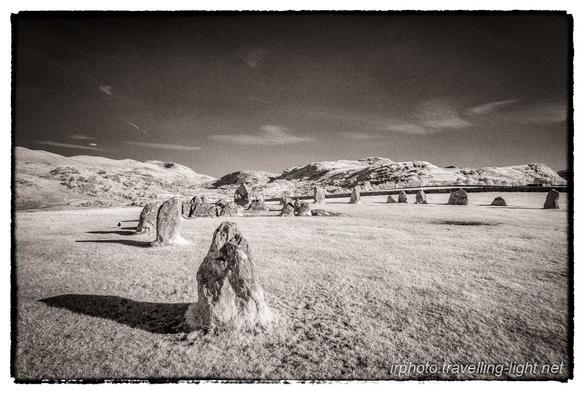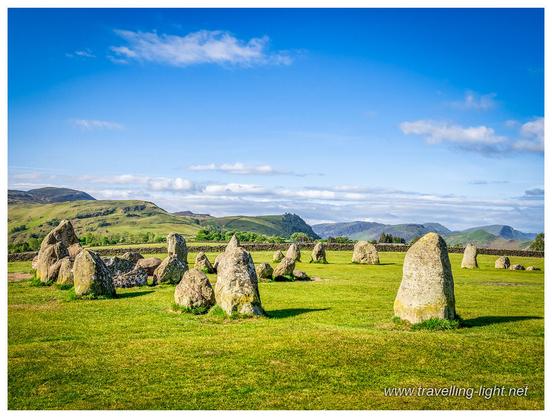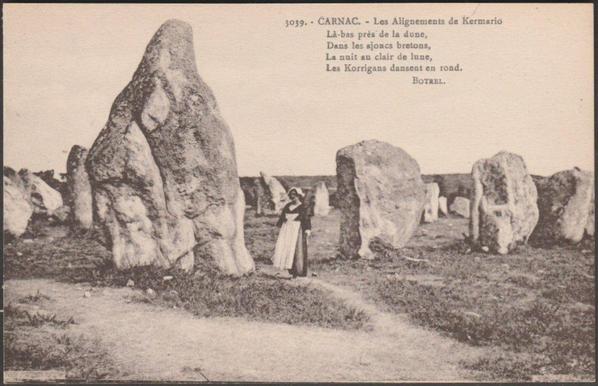The northernmost of the pair of menhirs known as The Sisters at Higher Drift in the Parish of Sancreed in West Penwith, Cornwall. Photographed from the south-east on 24 January 2004.
#Menhirs
The terminal menhir (№ 3, B or N4) at the end of Stone Row (№ 3, B or N3) at Drizzlecombe on Dartmoor, Devon. Photographed from the south-west on 27 August 1994.
#Menhirs #StoneRows #Megaliths #Drizzlecombe #Dartmoor #Devon #StandingStoneSunday
The Wheal Buller Menhir near Newbridge in West Penwith, Cornwall, photographed on 29 May 2006.
#WhealBullerMenhir #Menhirs #StandingStones #Penwith #Cornwall #Kernow #StandingStoneSunday
The north-easternmost of the two menhirs known as The Pipers, situate close to the Merry Maidens stone circle at Boleigh in Cornwall. Photo taken from the south on 1st February 2003.
#ThePipers #Cornwall #Kernow #StBuryan #Boleigh #Archaeology #Menhirs #StandingStones #StandingStoneSunday
📷 Pentax Super Program
🎞 Kodak Portra 160
🗺 Saint-Just 🇫🇷
🗓 2025/06
.
.
#menhirs #alignement #Bretagne #filmphotography #analog
📷 Pentax Super Program
🎞 Kodak Portra 160
🗺 Saint-Just 🇫🇷
🗓 2025/06
.
.
#menhirs #alignement #Bretagne #filmphotography #analogphotography
Dry Tree Menhir on Goonhilly Downs on Cornwall's Lizard Peninsula, photographed from the south on 22 April 2003.
#Menhirs #StandingStones #Megaliths #Cornwall #Kernow #GoonhillyDowns #StandingStoneSunday
Printed monochrome postcard showing "La Roche-Longue, près Quintin" in Côtes d'Armor or Côte-du-Nord, Breizh. Published by Cliché M Lesage, printed by Émile Hamonic of Saint-Brieuc, № 112. Postally used in 1911.
#Quintin #Breizh #Menhirs #CartesPostalesAnciennes #Postcards #StandingStoneSunday
The terminal menhir (№ 3, B or N4) at the end of Stone Row (№ 3, B or N3) at Drizzlecombe on Dartmoor, Devon. Photographed from the north-east on 27 August 1994.
#Menhirs #StoneRows #Megaliths #Drizzlecombe #Dartmoor #Devon #StandingStoneSunday
Come visit a unique but very obscure megalithic site in Portugal's Alentejo: a cross-shaped alignment of menhirs! The Cruciforme Megalítico do Alto da Cruz!
Treverven Menhir at Treverven near St Buryan in Cornwall, viewed from the west-north-west and photographed on 24 April 2004.
#Treverven #Menhirs #Megaliths #Cornwall #StandingStones #StandingStoneSunday
The Gûn Rith Menhir at Boleigh in West Penwith, Cornwall, photographed from the east-south-east on 7 August 2004.
#Cornwall #Kernow #Boleigh #Menhirs #StandingStones #GûnRith #MerryMaidens #StandingStoneSunday
Carnac : newly discovered section of the megalithic complex [pdf 20pp] #megalithic #neolithic #menhirs #Carnac https://www.cambridge.org/core/services/aop-cambridge-core/content/view/153CFCB514E2FFE47AA454DB6CF766AE/S0003598X25101233a.pdf/le_plasker_in_plouharnel_fifth_millennium_cal_bc_a_newly_discovered_section_of_the_megalithic_complex_of_carnac.pdf
The Kerris Menhir at Kerris near Paul in West Penwith, Cornwall. Photograph taken from the south-east on the 6th of March 2004.
#Kerris #Penwith #Cornwall #Kernow #Menhirs #Megaliths #StandingStoneSunday
#Cumbria #LakeDistrict #EnglishLakes #Menhirs #Megaliths #Megalithic #Prehistoric #Photography #Infrared #Photography #InfraredPhotography #LandscapePhotography #BlackAndWhite #BWPhotography #BlackAndWhitePhotography #LumixGH3 #720nm #SplitTone #DoubleSquare
Printed sepia postcard showing the fallen Grand Menhir Brisé at Locmariaquer in Morbihan, Breizh. Published by Corlobé-Kergosien of Locmariaquer and printed by Fotofox of Paris. Not numbered. Postally unused, but is c.1930.
#GrandMenhirBrise #Menhirs #Locmariaquer #Morbihan #Breizh #CartesPostalesAnciennes #Postcards #StandingStoneSunday
The menhir and stone circle, part of the complex at Merrivale on Dartmoor, Devon. Photographed from the south-west on 28 June 1993.
#Merrivale #Dartmoor #Menhirs #StoneCircles #StandingStoneSunday
#Cumbria #LakeDistrict #EnglishLakes #Menhirs #Megaliths #Megalithic #Prehistoric #Photography #Infrared #Photography #InfraredPhotography #LandscapePhotography #BlackAndWhite #BWPhotography #BlackAndWhitePhotography #LumixGH3 #720nm #SepiaTone
#Cumbria #LakeDistrict #EnglishLakes #Menhirs #Megaliths #Megalithic #Prehistoric #Photography #LandscapePhotography
Printed monochrome postcard showing the Alignements de Kermario at Carnac in Morbihan, Breizh. Published by Laurent-Nel of Rennes, № 3039. Postally unused, but is c.1910s.
#Carnac #Morbihan #Breizh #Menhirs #CartesPostalesAnciennes #Postcards #StandingStoneSunday
